What we´re reading…
This month’s key articles were selected by Ryan Chadha, David Victor, and Young In Yoon.
HEPATOLOGY
Liver Transplantation
Blood Pressure Variability Early After Liver Transplant Predicts Long-Term Mortality
Cardiovascular disease is a leading cause of mortality after liver transplant (LT). Elevated blood pressure (BP) in liver transplant recipients (LTRs) is associated with increased cardiovascular events (CVEs) and decreased survival. Increased visit-to-visit BP variability in the general population is associated with adverse outcomes. Whether BP variability is associated with adverse outcomes in LTRs is unknown. Read more.
American Journal of Transplantation
The molecular phenotypes of injury, steatohepatitis, and fibrosis in liver transplant biopsies in the INTERLIVER study
To extend previous molecular analyses of rejection in liver transplant biopsies in the INTERLIVER study (ClinicalTrials.gov #NCT03193151), the present study aimed to define the gene expression selective for parenchymal injury, fibrosis, and steatohepatitis. Read more.
Hepatology
Frailty, Mortality, and Healthcare Utilization after Liver Transplantation: From the Multi-Center Functional Assessment in Liver Transplantation (FrAILT) Study
Background: Frailty is a well-established risk factor for poor outcomes in patients with cirrhosis awaiting liver transplantation (LT), but whether it predicts outcomes among those who have undergone LT is unknown. Read more.
SURGERY
British Journal of Surgery
Middle hepatic vein reconstruction in adult living donor liver transplantation: a randomized clinical trial
Background: In adult right lobe living donor liver transplantation (LDLT), venous drainage of the anterior sector is usually reconstructed on the bench to form a neo-middle hepatic vein (MHV). Reconstruction of the MHV for drainage of the anterior sector is crucial for optimal graft function. The conduits used for reconstruction include cryopreserved allografts, synthetic grafts, or the recipient portal vein. However, the ideal choice remains a matter of debate. This study compares the efficacy of the native recipient portal vein (RPV) with PTFE grafts for reconstruction of the neo-MHV. Read more.
Surgery
A retrievable, dual-chamber stent protects against warm ischemia of donor organs in a model of donation after circulatory death
Background: Ischemic injury during the agonal period of donation after circulatory death donors remains a significant barrier to increasing abdominal transplants. A major obstacle has been the inability to improve visceral perfusion, while at the same time respecting the ethics of the organ donor. A retrievable dual-chamber stentgraft could potentially isolate the organ perfusion from systemic hypotension and hypoxia, without increasing cardiac work or committing the donor. Read more.
Liver Transplantation
Organ-specific comorbidities are associated with distinct complications after liver transplantation for biliary atresia
Background: While transplant outcomes for biliary atresia (BA) have improved, there is little data to predict risk of specific post-transplant complications. We thereby defined the impact of comorbidities in BA on post-transplant outcomes. Read more.
ANESTHESIOLOGY AND CRITICAL CARE
Journal of Cardiothoracic and Vascular Anesthesia
Hepatic Vein Flow Index During Orthotopic Liver Transplantation as a Predictive Factor for Postoperative Early Allograft Dysfunction
Objectives: The authors devised a hepatic vein flowindex (HVFi), using intraoperative transesophageal echocardiography and graft weight, and investigated its predictive value for postoperative graft function in orthotopic liver transplant.Design: Prospective clinical trial. Read more.
Annals of Surgery
En-Bloc Simultaneous Heart–Liver Transplantation in Adult Patients
Introduction: Complexity of combined heart-liver transplantation has resulted in low adoption rates. We report a case series of adult patients receiving en-bloc heart-liver transplantation (HLTx), describe technical aspects, and discuss benefits of the technique. Read more.
Clinical Transplantation
Preoperative echocardiography as a prognostic tool for liver transplant in patients with hypertrophic cardiomyopathy
Background: Hypertrophic cardiomyopathy (HCM) presents with a hypertrophied left ventricle (LV). It is often associated with LV outflow tract obstruction (LVOTO) and a risk for sudden death. This study aimed to describe outcomes of patients with HCM who underwent liver transplant (LT). Read more.





